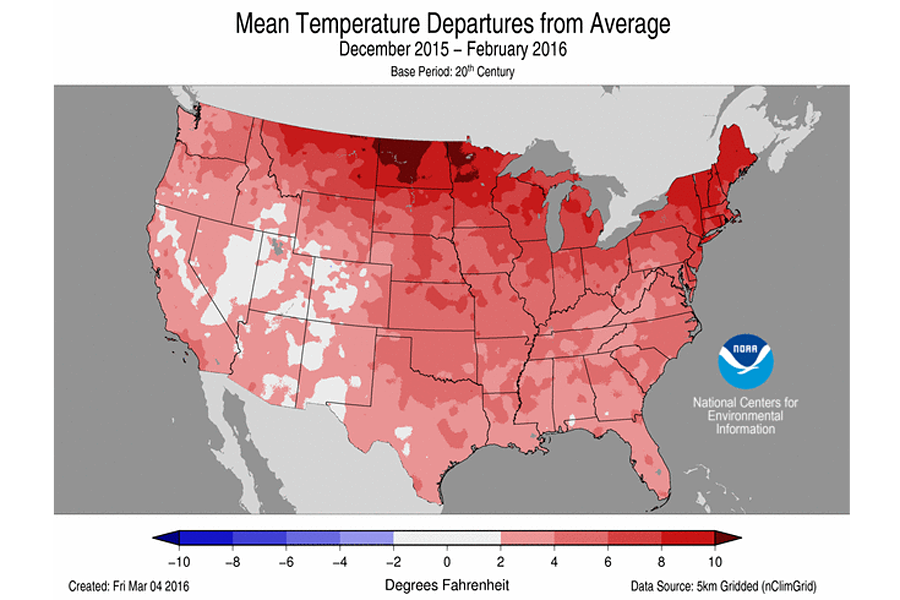This February broke global temperature records ... again
Loading...
Manmade climate change and El Niño have come together in a perfect storm to make this winter officially the hottest on record.
The National Oceanic and Atmospheric Administration (NOAA) released data for February 2016 on Saturday and the shortest month of the year was hot, hot, hot. Globally, the shortest month of the year was 1.35 degrees Celsius (2.43 degrees Fahrenheit) hotter than the average from 1951 to 1980, the benchmark used. February 2016 takes the crown from February 1998, which was 0.88 degrees Celsius (1.58 degrees Fahrenheit) hotter than the average.
Not only did February beat all the Februaries that came before, it now ascends the throne for hottest seasonally adjusted month on the books. January 2016 had claimed that title, but it didn't keep it for long. February was quick to snatch it away, beating the first month of the year by 0.21 degrees Celsius (0.38 degrees Fahrenheit).
February may have been a standout month for high temperatures, but it wasn't alone.
From the winter period from December to February for the continental United States was the hottest on record too. Average temperatures across the nation rose to 36.8 degrees Fahrenheit, 4.6 degrees over the 20th century average and beating the 1999-2000 winter record of 36.5 degrees.
In fact, February broke global records but ranked seventh just looking at temperatures in the continental US.
It's not the records that make February's heat so concerning, it's that it represents a trend suggesting we are on track to blow past the 2 degrees Celsius (3.6 degrees Fahrenheit) threshold soon. That number, representing a temperature rise over pre-industrial levels, has been considered the maximum the planet can handle.
As Jeff Masters and Bob Henson write for Weather Underground, the 1951-1980 average would have already been hotter than pre-industrial temperatures. They estimate that temperatures could have already risen 0.2 to 0.4 degrees Celsius by that point. That would set February at 1.55 to 1.75 degrees Celsius hotter than pre-industrial times. "Either way," they write, "this result is a true shocker, and yet another reminder of the incessant long-term rise in global temperature resulting from human-produced greenhouse gases."
This record-breaking winter may not entirely be due to human-induced climate change. This year is also seeing a particularly strong El Niño, which raises temperatures. But this year's high temperatures are still in line with the long-term trend of global warming.
For some reporting on the weather and climbing global temperatures, it may seem like a never-ending series of chart-topping months (and 2015 also set its own record). As Slate's Phil Plait writes:
Writing about monthly temperature records is like playing global warming Mad Libs.
“Another record high global temperature was set for [Month][Year], according to [every measurement available], blowing away the last record from [recent month].”








